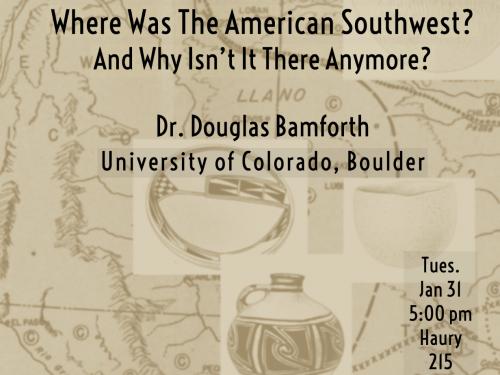
Lecture Details
Presenter:
We often divide native North America into well-defined “culture areas” that correspond roughly to environmental/physiographic areas (the Northwest Coast, the Great Plains, etc.). The Southwest, extending from Durango (Colorado) to Durango (Mexico) and from Las Vegas (Nevada) to Las Vegas (New Mexico) is one of these. The earliest Europeans who described the region saw a vivid natural and cultural boundary that echoes down to the present in archaeology and the popular imagination, from Plains grasslands to Southwestern mountains, from bison hunters to maize farmers. The archaeology of the Colonial era shows us this boundary just as Europeans like Coronado saw it, with distinctive material culture in the Plains and Southwest and highly structured economic interaction between them. The archaeology of more ancient times, though looks very different from this: distinctively Southwestern architecture and material culture extended far out onto the grasslands, often with no evidence of interaction with Plains people. From the 13th through the arrival of the Spanish in the early 16th centuries, economic and social relations between the Plains and the Southwest varied from trade to warfare, culminating in the disappearance of Southwestern people from the Southern Plains a generation or so before Europeans arrived.




